Inbox and Environment News - Issue 173
July 27 - August 2, 2014: Issue 173

Computer privacy: Share button may share your browsing history, too
July 22, 2014 - One in 18 of the world's top 100,000 websites track users without their consent using a previously undetected cookie-like tracking mechanism embedded in 'share' buttons. A new study by researchers at KU Leuven and Princeton University provides the first large-scale investigation of the mechanism and is the first to confirm its use on actual websites.
The mechanism, called "canvas fingerprinting," uses special scripts - the coded instructions that tell your browser how to render a website - to exploit the browser's so-called 'canvas', a browser functionality that can be used to draw images and render text.
When a user visits a website encoded with canvas fingerprinting software, a first script tells the user's browser to print an invisible string of text on the browser's canvas. Another script then instructs the browser to read back data about the pixels in the (invisibly) rendered image.
These data contain important information about the user's browser type, graphics card, system fonts and even display properties. Because this grouping of data is highly likely to be unique for each user, it can be reliably associated to individual users, like a fingerprint.
Once a website has determined a device's fingerprint, it can easily recognize the user on subsequent site visits, much in the same way cookies do.
But while unwanted cookies can be flagged or blocked to enhance a user's online privacy, there is no available solution for doing so with fingerprints.
In this study, the researchers used automated 'crawlers' to scan the world's top 100,000 websites for canvas fingerprinting scripts. They found canvas fingerprinting scripts on 5,542 of the Internet's top 100,000 websites, a prevalence of 5.5 percent.
Previous studies on related browser fingerprinting techniques reported a prevalence of 0.4 percent and 1.5%, respectively, although they are not directly comparable to the current study since they measured different types of fingerprinting techniques.
While researchers demonstrated the feasibility of canvas fingerprinting as a tracking mechanism in 2012, this is the first time it has been observed on real websites and traced back to specific provider domains. Analyses of the real-world scripts reveal that fingerprinters are going beyond the techniques known by the academic research community.
Surprisingly, the researchers traced 95 percent of canvas fingerprinting scripts back to a single company: AddThis. AddThis is the world's largest content sharing platform and provides free website plugins such as share buttons, follow buttons and content recommendation features. The company reaches an estimated 97.2% of Internet users in the United States and receives 103 billion page views each month.
Can users protect themselves against canvas fingerprinting? Acar and his colleagues studied the effect of ad-industry opt-out tools offered by the Network Advertising Initiative (NAI) and the European Interactive Digital Advertising Alliance. No websites included in the opt-lists stopped collecting canvas fingerprints after activating the opt-out option.
At present, only one browser, Tor, can prevent canvas fingerprinting scripts, but this added security comes with major trade-offs in performance, functionality and content availability.
Many websites, including sensitive sites such as health and government websites, unknowingly contain canvas fingerprinting - by using one of AddThis' free plug-ins for example.
The researchers are concerned by the growing prevalence of canvas fingerprinting , says Gunes Acar, the first author of the study: "This is an advanced tracking mechanism that misuses browser features to enable the circumvention of users' tracking preferences. We hope that our results will lead to better defenses, increase accountability for companies deploying sticky tracking techniques and an invigorated and informed public and regulatory debate on increasingly resilient tracking techniques."
G. Acar, C. Eubank, S. Englehardt, M. Juarez, A. Narayanan, C. Diaz. The Web never forgets: Persistent tracking mechanisms in the wild. (Under submission), 2014 [link]
The researchers traced 95 percent of canvas fingerprinting scripts back to share buttons provided by AddThis, the world’s largest content sharing platform. Credit: Image courtesy of KU Leuven
Teaser officiel Rescue 2014
Astronomers pioneer a 'Google street view' of galaxies
July 23, 2014 - A new instrument based on bundles of optical fibers is giving astronomers the first 'Google street view' of the cosmos - incredibly detailed views of huge numbers of galaxies. Developed by researchers at the University of Sydney and the Australian Astronomical Observatory, the optical-fibre bundles can sample the light from up to 60 parts of a galaxy, for a dozen galaxies at a time.
By analysing the light's spectrum astronomers can learn how gas and stars move within each galaxy, where the young stars are forming and where the old stars live. This will allow them to better understand how galaxies change over time and what drives that change.
"It's a giant step," said Dr James Allen of the ARC Centre of Excellence for All-sky Astrophysics(CAASTRO) at the University of Sydney.
"Before, we could study one galaxy at a time in detail, or lots of galaxies at once but in much less detail. Now we have both the numbers and the detail."
The Australian team is now a year or two ahead of its international competition in this field. In just 64 nights it has gathered data on 1000 galaxies, twice as many as the previous largest project, and over the next two years it will study another 2000.
CAASTRO funding was crucial in helping the team gain its lead. "They had a great idea but it was going to take time to pull the resources together," said the organisation's director Professor Bryan Gaensler. "CAASTRO was able to get it happening fast."
Called SAMI (the Sydney-AAO Multi-Object Integral field spectrograph), the optical-fibre instrument was installed on the 4-m Anglo-Australian Telescope at Siding Spring Observatory in northwest NSW last year.
The technological leap is the 'hexabundle', sixty or more optical fibres close-packed and fused together, developed by the University of Sydney's astrophotonics group led by Professor Joss Bland-Hawthorn.
Using the new instrument astronomers from the Australian National University and the University of Sydney have already spotted 'galactic winds' - streams of charged particles travelling at up to 3,000 km a second - from the centre of two galaxies.
"We've seen galactic winds in other galaxies, but we have no idea how common they really are, because we've never had the means to look for them systematically. Now we do," said the University of Sydney's Associate Professor Scott Croom, a Chief Investigator on the project.
The researchers are also uncovering the formation history of galaxies by looking to see if they are rotating in a regular way or if the movement of their stars is random and disordered.
"There are hints that galaxies with random motions sit at the centres of groups of galaxies, where many smaller galaxies may have fallen into them," said Dr Lisa Fogarty, a CAASTRO researcher at the University of Sydney who led this work.
On Thursday 24 July the researchers released the first set of data from the instrument to the worldwide astronomical community and Dr Allen will give a related presentation at the annual scientific meeting of the Astronomical Society of Australia.http://asa.astronomy.org.au/asm.html
The 2014 Annual Scientific Meeting and General Meeting (ASA2014) will be hosted by Macquarie University from Sunday 20 July to Friday 25 July 2014.www.asa2014.mq.edu.au/
CAASTRO, the new Centre of Excellence for All-sky Astrophysics was officially launched on 12 September 2011. CAASTRO was approved by the Australian Research Council (ARC) and will receive funding from the federal Government and seven collaborating Australian universities for seven years (2011-2018).
CAASTRO website: http://www.caastro.org
Tempting people to move for work takes more than dollars
July 24, 2014 – Sufficient financial inducements are one way of encouraging people to move to regional Australia for jobs, but other factors also play a part, according to a new report. Moving workers from a region with high unemployment to a region with many job vacancies is an important aspect of labour markets. The Commission of Audit recently advised the government to "force" long-term unemployed people who are single and between the ages of 22 and 30 to move to areas of higher employment if they have been on the dole for 12 months.
Researchers from Monash and Deakin Universities investigated the willingness of people from NSW and South Australia, states with pockets of relatively high unemployment, to move to Karratha, Western Australia, and Emerald, Queensland for work. These are both regional centres that had a relatively high demand for labour in 2012.
Associate Professor Chandra Shah from Monash University's Centre for the Economics of Education and Training said some groups of people were more prepared to move for work than others. Typically a person most likely to move for work was under 30, male, single, not born in Australia, looking for a new job, knew people other than family at the location where the job was offered and didn't own a house.
"People were more willing to move for work if offered jobs that were ongoing or long term rather than fixed term and jobs that provided training," Associate Professor Shah said.
"Fly-in/fly-out contracts were more attractive than permanent relocation."
The researchers also calculated the wage premium a person was willing to forgo (or trade off) to have these conditions included in the job offer. Prospective employees were willing to trade off $10,500 to have a fly-in fly-out rather than a permanent relocation contract.
On the other hand, a wage premium is required to attract women ($29,000 above average wages); married people ($19,200); and people who own their house ($25 600) to accept jobs in the two regional locations. Those over 40 generally required a higher wage premium to move.
Dr Aaron Nicholas from Deakin University said policies promoting geographical labour mobility were more likely to succeed if job offers included opportunities to gain or improve skills, and provided more than short-term contracts.
"Addressing the demand-side factors, such as matching job seekers' skills and experience to employer requirements, has the potential to improve geographic labour mobility," Dr Nicholas said.
The report can be found online.
Getting science from CSIRO isn’t just about start-ups
July 23, 2014 By Jan Bingley, general manager of business development and commercial at CSIRO
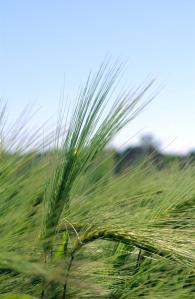 BarleyMax™ crop in the field Credit: Carl Davies
BarleyMax™ crop in the field Credit: Carl Davies
I learned a long time ago that “commercialisation” is a greatly misunderstood activity. Most often, it is interpreted narrowly as the process of developing IP, protecting it in the form of patents and licensing them for royalties or equity in start-ups.
It’s not surprising that commercialisation is seen this way. Many universities and publicly funded research agencies continue to measure performance by counting the number of royalty-bearing licences, number of start-ups formed and the revenue received each year from these transactions. Indeed we do it here in Australia via the National Survey of Research Commercialisation published by the federal government. The largest association for university commercialisation – the Association of University Technology Managers – measures this annually via its large commercialisation survey covering hundreds of North American Universities.
However, the comparison between CSIRO’s annual revenue and the revenue received from commercialisation transactions published in this forum on July 7, is based on misunderstandings and is misleading. About 34 per cent of CSIRO’s annual revenue, just over $400 million, is provided by our industry partners and other clients to fund specific collaborative R&D projects. The balance is provided by the federal government. CSIRO has hundreds of collaborations every year with industry – both big and small – and every one of them is all about commercialisation. Alongside our industry partners, we identify the problems that need solving, work together to solve them, and the resulting IP – in the form of know-how as well as protectable IP – rests with the industry partner. Those partners may go on to develop it further, often involving many more years and millions of dollars to reap the commercial benefits.
CSIRO sometimes secures a future financial benefit as a reward for collaborating with an industry partner, but in revenue terms this will be tiny. However, in impact, having an industry partner go on to become bigger, better and stronger is what CSIRO strives to achieve. This is why we continue to enjoy considerable government funding. We are here to assist industry for the benefit of Australia and Australians. Industry in all its forms – not just start-ups.
It is rare that CSIRO develops IP in its own right: most of our IP has been developed in collaboration with our partners and is therefore encumbered through that collaborative activity. This means that CSIRO’s patent portfolio is not littered with “Rembrandts in the attic” that some think we must be hiding. Occasionally, we see an opportunity to generate impact through licensing to start-ups and we are immensely proud of the success of these start-ups and the impact they are generating for Australia.
OUR PATENTS ARE OFTEN SCIENCE-BASED
There are numerous examples of start-ups that have benefited from licensing IP from CSIRO – BuildingIQ, Benitec, Radiata, Starpharma, Windlab, BarleyMax, Advantage Wheats, GeoSLAM, and many others. CSIRO can improve on its licensing regime to ensure we are as efficient as possible when transacting with start-ups. We are learning from this feedback and we’ve taken steps to address this, including coming up with standard licence terms. However, it is wrong to think CSIRO’s patent portfolio is the answer to generating more start-ups in Australia. Our patents are often very science-based, far away from productisation and require significant amounts of money and time before any prospect of commercial returns are possible. In short, our patents are rarely suited to a start-up model.
I’ve been approached over the years by many entrepreneurs looking for an opportunity to commercialise our IP – only very occasionally has this engagement resulted in spotting something in the portfolio suited to a start-up model. On average, we license our technology to two or three start-ups each year (a high rate in comparison to most publicly funded research agencies). CSIRO’s mission is to deliver innovative solutions for Australia’s industry, society and environment through great science – we’re about doing Science for Impact. Getting our science out of CSIRO and into the hands of businesses – big and small – that have the resources to go on and commercialise (use) the science for positive impact for their business and therefore generate positive outcomes for Australia and Australians.
We also partner extensively with established Australian SME’s so they can access CSIRO’s extensive know-how and intellectual horse-power to better their businesses – in some cases we even provide funds to those SMEs so they can access innovation to ultimately become bigger, more competitive companies. CSIRO’s SME Engagement Centre assists small to medium Australian enterprises by identifying and connecting companies to technical expertise and resources, defining technical issues, developing research projects for industry and providing guidance around access to funding for research.
If CSIRO receives small amounts of revenue in recognition of our involvement along the way, that’s great as we reinvest that into new science. But it is by no means a measure of the significant impact we seek to generate from taxpayer funds in research. The real impact of commercialisation is not the narrow discussion about royalty earnings, it’s about benefits to the economy and society. One of our best known inventions is our WLAN patent that has earned $425 million in licensing revenue, but in evaluating the success of this invention we also have to take into account the value created by the fact that our wireless technology enables over seven billion devices around the world.
Think about how much that CSIRO invention is the basis of today’s connectivity – how we each use it, every day. Now that’s impact.
This article was first published in the Australian Financial Review 22 July 2014

Plant a Tree for National Tree Day!
Today!
On Sunday 27 July, 9am-12pm you can take part in the biggest community tree planting and nature care event, at Sydney Lakeside Holiday Park, North Narrabeen.
It’s a great way for Pittwater residents to help out by planting and caring for native trees and shrubs – as well as improving the environment in which they live.
National Tree Day started in 1996 and since then more than 2.8 million people have planted 20 million seedlings.
Contact Council’s Bushcare Officer for further details: 99701367 orbushcare@pittwater.nsw.gov.au
TRANSFORMING GOVERNMENT ENERGY USE
Rob Stokes MP; Minister for the Environment, Minister for Heritage, Minister for the Central Coast, Assistant Minister for Planning - MEDIA RELEASE, Tuesday, 22 July 2014
Environment Minister Rob Stokes addressed the opening of Clean Energy Week today, announcing a new way forward that will slash the state government’s energy and water use, improve waste management and deliver cleaner air.
In his address, the Minister said that the new Government Resource Efficiency Policy leads the way for resource efficiency in NSW.
“The NSW Government is one of the one of the biggest electricity consumers in the state and this new policy will increase resource efficiency and free up funds for frontline Government services,” Mr Stokes said.
“Through this policy, NSW Government agencies are anticipated to invest around $290 million in energy efficiency and on-site electricity generation projects over the next decade.”
The Minister outlined that under the new policy, all NSW government departments will undertake energy efficiency projects for 90 per cent of their billed energy use by 2023- 24, reducing their energy bills across the NSW government by $55 million a year.
“We will improve our cities by getting all large office buildings, owned or leased by the NSW government, to achieve and maintain a NABERS Energy rating of at least 4.5 stars, and a NABERS Water rating of at least 4 stars,” Mr Stokes said.
“The policy also demonstrates our commitment to the renewable energy sector by including a requirement for six per cent of electricity for most agencies to come from GreenPower.
“There are also measures for NSW Government agencies who have small electricity contracts to identify sites where solar photovoltaic systems are feasible using a simple checklist.
“This information will be published by October 2015 to enable the solar industry to make market offers to agencies to install or lease solar systems across their sites.
“The policy covers all general government sector agencies who will publish a statement of their performance against the policy on an annual basis.
“The Office of Environment and Heritage will assess whole-of-government performance and review the policy every two years.
“The reporting requirements in this policy focus on key outcomes and allow agencies to get on with implementing projects rather than getting bogged down in paperwork,” he said.
Parliamentary Secretary for Renewable Energy, Leslie Williams said that the Government Resource Efficiency Policy is a great opportunity for the clean energy industry to do business with the NSW government.
The policy can be downloaded from HERE
QLD. Wildlife hospitals save 16,000 animals in four years
22 July 2014 - Birds are the most commonly rescued wildlife in Queensland, with the laughing kookaburra among our hardiest species, according to new research from The University of Queensland’s Gatton Campus.
Masters student Marisol Torregrosa Rocabado and honours student Archibald Bouchon-Small tracked animal rescues from three wildlife hospitals in South East Queensland over four years for their research.
They found that from 2009-2013, 80,000 animals were rescued, with 16,000 animals being successfully rehabilitated and released back into the wild.
“Fifty per cent of all animals brought into care are birds and most of the species identified are abundant and widespread,” Mr Bouchon-Small said.
“It was interesting that the survival rate of the laughing kookaburra is 34 per cent - twice the average survival rate of birds. This kind of data shows us the areas and the species where we can make the most difference.”
Rainbow lorikeets were the bird species most commonly admitted to wildlife hospitals, followed by Australian magpies, tawny frogmouths, the laughing kookaburra and finally noisy miners.
Ringtail possums were the most commonly rescued mammals, followed by brushtail possums, koalas, black flying foxes and eastern grey kangaroos.
Mr Bouchon-Small said the findings highlighted the important role hospitals played in the welfare and conservation of wildlife.
“We tracked the animals, looking at the cause of admission, length of stay in rehabilitation and the outcome for each animal,” he said.
“Strong seasonal trends were identified, with a marked increase in animals being admitted during spring and summer coinciding with the breeding season of most species.”
Senior Lecturer in Wildlife Behaviour and Welfare Dr Andrew Tribe said the results showed how little was known about current rehabilitation procedures.
“This study shows how important accurate record-keeping is to track what is happening with our wildlife,” Dr Tribe said.
“Good record-keeping by the hospitals allowed us to track this data, but there were some inconsistencies between the hospitals. It would be helpful if record-keeping was standardised.”
The data was collected from South East Queensland’s three largest wildlife hospitals: the Australia Zoo Wildlife Hospital, Currumbin Wildlife Sanctuary Hospital and the Royal Society for the Prevention of Cruelty to Animals Queensland Wildlife Hospital.
BIODIVERSITY INFORMATION CAPTURED IN NEW CSIRO BOOK – Free to download
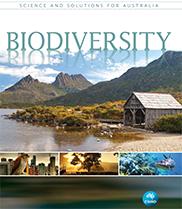 This morning at Parliament House, Federal Environment Minister Greg Hunt launched Biodiversity: Science and Solutions for Australia, a new book from CSIRO.
This morning at Parliament House, Federal Environment Minister Greg Hunt launched Biodiversity: Science and Solutions for Australia, a new book from CSIRO.
Capturing the latest information on Australia's biodiversity, the book aims to provide business, government, and the community with practical solutions to managing Australia's globally unique natural assets.
"This publication is an invaluable resource for anyone managing Australia's ecosystems. The book provides an important bridge from our scientists to the wider Australian community," Minister Hunt said.
Whether it's a precious cultural symbol, our life-support system, or a resource to be used - biodiversity matters to all Australians. Yet, despite our sense of its importance as part of our national identity, in many parts of our country biodiversity is in trouble.
"CSIRO's book draws together the latest science to identify practical solutions to the many challenges that face Australia's unique biodiversity, which include habitat fragmentation, altered fire regimes, invasive species, harvesting of species, and species decline," CSIRO Chief Executive Dr Megan Clark said.
"The book draws on CSIRO's 90 years of research into biodiversity, as well as insights from the broader community, including research organisations, industry, all levels of government and the wider community."
The book's 192 pages provide scientific insights including:
• the ancient origins and unique features of Australia's species, as well as the current status of our biodiversity on land and in rivers, lakes and the sea.
• tools for management and planning, including Australia's protected area system
• Indigenous perspectives on biodiversity
• how Australia's biodiversity interacts with agriculture, the resources sector, and cities.
The book is available for free as an eBook from the CSIRO website and will be distributed to key decision makers around the country.
The printed version of the book has been produced on paper certified by the Forest Stewardship Council.
Biodiversity: Science and Solutions for Australia can be downloaded for free at: www.csiro.au/biodiversitybook
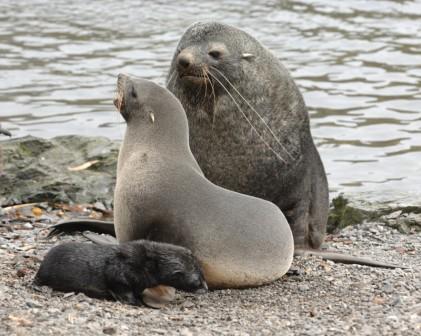
Major impact of climate change on Antarctic fur seals
July 23, 2014 – Genetic analysis of Antarctic fur seals, alongside decades of in-depth monitoring, has provided unique insights into the effect of climate change on a population of top-predators. The findings show that the seals have significantly altered in accordance with changes in food availability that are associated with climate conditions. Despite a shift in the population towards 'fitter' individuals, this fitness is not passing down through generations, leaving the population in decline.
Environmental change is expected to affect many species and biological systems throughout the world. To understand these changes long-term monitoring is required. The British Antarctic Survey's unique Long Term Monitoring and Survey programme has given researchers a rare opportunity to explore how fur seal life histories have changed over time in relation to the climate and food availability.
Researchers from the British Antarctic Survey and Bielefeld University in Germany analysed data gathered from as far back as 1981 to assess changes over generations of female fur seals on South Georgia, in the South Atlantic Ocean.
Lead author, Dr Jaume Forcada from the British Antarctic Survey explains: "Compared with 20 years ago, we can see that female fur seals are now born with a lower weight, those that survive and return to breed tend to be the bigger ones and they have their first pup later in life than they used to. Such changes are typically associated with food stress.
"An important food source for the seals is Antarctic krill. Decades of data collected at South Georgia show how changes in the seal population have occurred over time with changes in krill availability. Even if krill is very abundant, environmental variation determines its availability in the seals' feeding grounds. This environmental variation is driven by the climate which impacts local atmospheric, sea ice and oceanographic conditions. Adverse climatic conditions are typically associated with low krill availability, and reduce the survival and breeding success of fur seals."
The researchers found that females who did survive to motherhood were likely to be more 'heterozygous'. This is where an individual possesses a higher level of genetic variation and is associated with higher fitness in many species. Whilst these females are more likely to survive and breed, their pups will only have the same advantage if they too are heterozygous. However, the heterozygous characteristic is not inherited; it depends on which male the female mates with and so arises mostly through chance. This means that many seals are born who are not heterozygous and are therefore less able to cope with the changing environment.
Co-author, Dr Joe Hoffman from Bielefeld University explains: "We found that, over the last two decades, the proportion of breeding females that are highly heterozygous has increased, as these individuals are more likely to survive the changing conditions. Strong selection by the environment can drive rapid evolution. However, in this case the seals do not appear to be evolving because surviving females do not pass their high heterozygosity on to their offspring.
"Therefore, with each new generation, the process of selection has to start all over again, with only those individuals that happen to be born more heterozygous having a good chance of survival. As the climate continues to change, many fur seal pups are not surviving to adulthood and the population is declining."
Climate change is already altering environmental pressures on many species, and scientists do not yet know how populations will cope with these new environments. This study shows that natural selection on a fur seal population has altered as a result of climate change and that the seals have been unable to evolve in response.
Impacts on one species can affect a whole ecosystem. The world continues to change and, if we are to adapt, it is essential to anticipate future changes in natural systems. Long-term data sets are a valuable resource for biologists who must forecast how species will respond to future environmental change.
Jaume Forcada, Joseph Ivan Hoffman. Climate change selects for heterozygosity in a declining fur seal population. Nature, 2014; 511 (7510): 462 DOI: 10.1038/nature13542
Antarctic fur seal female and its pup with a male that is holding a breeding territory. Credit: Dr. Jaume Forcada
Antarctic fur seals - Published on 23 Jul 2014
Mixing it up: Study provides new insight into Southern Ocean behavior
July 20, 2014 – A new study has found that turbulent mixing in the deep waters of the Southern Ocean, which has a profound effect on global ocean circulation and climate, varies with the strength of surface eddies - the ocean equivalent of storms in the atmosphere - and possibly also wind speeds.
It is the first study to link eddies at the surface to deep mixing on timescales of months to decades. This new insight into how the Southern Ocean behaves will allow scientists to build computer models that can better predict how our climate is going to change in the future. The findings are published in the latest issue of Nature Geoscience.
The Southern Ocean plays a pivotal role in the global overturning circulation, a system of surface and deep currents linking all oceans and one of the fundamental determinants of the planet's climate. The Southern Ocean around Antarctica is the only location where the ocean can circulate freely all the way around the globe without continental barriers.
Because the ocean is made up of many layers of water that are dependent on temperature and salinity, water moves easily along horizontal or 'isopycnal' layers, but mixes only slowly across the layers, known as 'diapycnal' mixing. This combination of diapycnal and isopycnal mixing drives the upwelling of deep waters up to the surface, forming an 'upper' and 'lower' overturning cell. When deep waters rise to the surface, they bring with them the nutrients that plankton need to grow. Conversely, as surface waters sink they take heat and dissolved CO2 from the atmosphere, strongly shaping regional and global climate change.
The researchers took measurements of small-scale temperature and velocity fluctuations, to measure the diapycnal movements in the Antarctic Circumpolar Current (ACC) across the Drake Passage region of the Southern Ocean.
The data revealed that, during the period of their measurements, turbulence in deep waters significantly correlated with surface eddy activity. The mechanism that causes eddies in the surface ocean leads to an intensification of currents in the top and bottom layers of the ocean. When such instability arises, strengthened bottom currents interact with rough bottom topography to generate internal waves that eventually devolve into turbulence. This process provides a source of energy for the mixing of abyssal waters, which, in turn, hastens the global overturning circulation.
The researchers established that deep water eddies are likely energised by strong westerly winds over the Southern Ocean that force the ACC and that abyssal mixing, on time scales of months to decades, reacts to this changing atmospheric climate.
Study co-author Katy Sheen, a Postdoctoral Research Fellow from Ocean and Earth Science at the University of Southampton, says: "These findings will help us to understand the processes that drive the ocean circulation and mixing so that we can better predict how our Earth system will respond to the increased levels of carbon dioxide that we have released into the atmosphere."
The researchers used data from the 'Diapycnal and Isopycnal Mixing Experiment in the Southern Ocean' (DIMES) project, a UK/US field program aimed at measuring diapycnal and isopycnal mixing in the Southern Ocean. DIMES released a chemical dye tracer into the ACC about a mile below the sea surface. Over five years, the horizontal and vertical spread of the tracer was mapped out by measuring its concentration in hundreds of seawater samples, to identify how quickly the Southern Ocean moved water particles around. It also used a mooring cluster of sensors in the Drake Passage to provide detailed time series information on the processes responsible for the mixing of the tracer.
K. L. Sheen, A. C. Naveira Garabato, J. A. Brearley, M. P. Meredith, K. L. Polzin, D. A. Smeed, A. Forryan, B. A. King, J-B. Sallée, L. St. Laurent, A. M. Thurnherr, J. M. Toole, S. N. Waterman, A. J. Watson. Eddy-induced variability in Southern Ocean abyssal mixing on climatic timescales. Nature Geoscience, 2014; DOI:10.1038/ngeo2200
This image shows sensors from the DIMES project being used in the Drake Passage. Credit: Katy Sheen
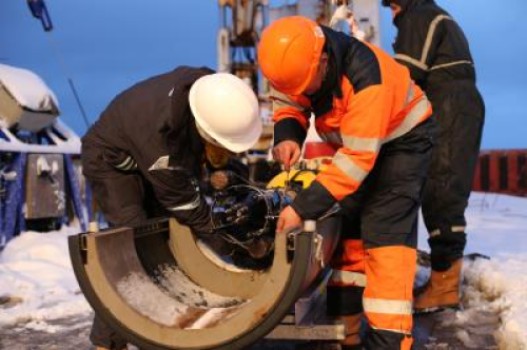
Tourists leave environmental concerns at home
21 July 2014 - People who have environmentally friendly lifestyles at home often engage in environmentally harmful behaviour when they go on holiday, research shows.
The subjects of a University of Queensland study were aware of tourism’s negative environmental consequences, but displayed an attitude-behaviour gap, said PhD student Emil Juvan from UQ Business School, the report’s author.
Mr Juvan’s paper, The Attitude – Behaviour Gap in Sustainable Tourism, aims to lead the tourism industry and other stakeholders in finding new ways to increase the level of environmentally sustainable holiday behaviours.
“This research shows there is little evidence to suggest that people consider the environmental costs of their holiday, nor do their environmental concerns influence their holiday choices,” Mr Juvan said.
It also revealed some of the most common excuses people gave for ignoring environmental costs, included denial of consequences, responsibility and control.
“These categories present a promising starting point for developing interventions that will prevent tourists from using excuses for not making the right choices,” Mr Juvan said.
“An environmentally unsustainable tourism industry is not only harmful to the environment, but also to its own future as it depletes the very resources tourists come to enjoy.”
Mr Juvan’s PhD supervisor, Professor Sara Dolnicar, said much of the previous research in sustainable tourism assumed that people could be “trained and re-educated”.
“Emil’s work takes a totally different perspective,” Professor Dolnicar said.
“It accepts that people tend to find excuses for not doing the right thing.
“This is an extremely important piece of research because it makes the first step towards increasing the level of environmentally friendly behaviour of tourists while at the same time accepting that such behaviour does not come naturally to people who are investing a lot of time and money to relax and be free of the typical worries they have at home.”
Mr Juvan’s study has been published in the leading international academic journal Annals of Tourism Research.
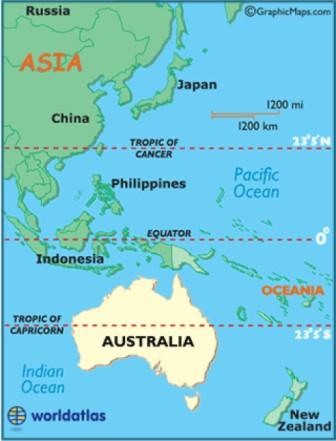
Sea level rising in western tropical Pacific anthropogenic as result of human activity, study concludes
July 20, 2014 – A new study led by Old Dominion University and the University of Colorado Boulder indicates sea levels likely will continue to rise in the tropical Pacific Ocean off the coasts of the Philippines and northeastern Australia as humans continue to alter the climate. The study authors combined past sea level data gathered from both satellite altimeters and traditional tide gauges as part of the study. The goal was to find out how much a naturally occurring climate phenomenon called the Pacific Decadal Oscillation, or PDO, influences sea rise patterns in the Pacific, said Assistant Professor Benjamin Hamlington of Old Dominion University in Norfolk, Va., a former CU-Boulder postdoctoral researcher and lead study author.
The PDO is a temperature pattern in the Pacific Ocean akin to El Niño but which lasts roughly 20 to 30 years and contributes significantly to the decadal trends in regional and global sea level, said CU-Boulder Research Professor Robert Leben, a study co-author. The research team performed sea level reconstructions going back to 1950 by fitting patterns of satellite altimeter data to tide gauge data, then stripped away the effects of the PDO to better understand its influence on current sea level increases in the Pacific.
"The conventional wisdom has been that if the Pacific Decadal Oscillation was removed from the equation this sea level rise in parts of the Pacific would disappear," said Hamlington, who received his doctorate from CU-Boulder. "But we found that sea level rise off the coasts of the Philippines and northeastern Australia appear to be anthropogenic and would continue even without this oscillation."
A paper on the subject was published online in the July 20 issue of Nature Climate Change. Other co-authors on the study included CU-Boulder doctoral student Matthew Strassburg, CU-Boulder Associate Professor Weiqing Han, CU-Boulder Professor R. Steven Nerem and Seoul National University faculty member K.Y. Kim. The study was funded primarily by NASA and the National Science Foundation.
The team also used NASA climate models to assess sea level rise in the tropical Pacific that included data on the warming tropical Indian Ocean, which has been shown in previous studies to be caused by increases in greenhouse gases. The climate modeling portion of the new study also showed sea level rise near the Philippines and Australia is caused at least in part by anthropogenic, or human-caused, warming said Hamlington, who got his doctorate under Leben.
The research team estimated that areas of the ocean near the Philippines and northeast Australia are being raised by about 1 centimeter per year due to anthropogenic warming, which can increase the intensity of severe weather. "When water starts piling up there and typhoon-like storms are traveling over higher sea levels, it can be a bad situation," said Hamlington.
Although global sea level patterns are not geographically uniform - sea level rise in some areas correlate with sea level fall in other areas - the average current global sea level rise is roughly 3 millimeters per year. Some scientists are estimating global seas may rise by a meter or more by the end of the century as a result of greenhouse warming.
"When the current PDO switches from its warm phase to its cool phase sea levels on the western coast of North America likely will rise," said Leben of CU-Boulder's aerospace engineering sciences department. "I think the PDO has been suppressing sea level there for the past 20 or 30 years."
In a broader sense, the new study shows that scientists may be able to look at other regions of the world's oceans and extract the natural climate variability in order to measure human-caused effects, said Hamlington, a researcher at CU-Boulder's Cooperative Institute for Research in Environmental Sciences. "This kind of research may start revealing patterns that we might not expect."
Most of the satellite altimeter data for the study came from NASA's Topex-Poseidon and Jason satellite series missions. Satellite altimetry measures sea level rise by bouncing radar pulses off the surface of the ocean at particular points and calculating the round-trip time it takes the pulse to return to the spacecraft said Leben, also a faculty member of CU-Boulder's Colorado Center for Astrodynamics Research, or CCAR.
A 2010 study led by CU-Boulder's Han published in Nature Geoscience concluded that greenhouse gases were responsible for rising seas in parts of the Indian Ocean. The changes are believed to be at least partially a result of the roughly 1 degree Fahrenheit increase in the Indo-Pacific warm pool - an enormous, bathtub-shaped area stretching from the east coast of Africa to the International Date Line in the Pacific - during the past 50 years.
B. D. Hamlington, M. W. Strassburg, R. R. Leben, W. Han, R. S. Nerem, K-Y. Kim. Uncovering an anthropogenic sea-level rise signal in the Pacific Ocean. Nature Climate Change, 2014; DOI:10.1038/nclimate2307
Sea level rise around the Philippines and off the northeast coast of Australia has been shown to be caused by human activity, according to a new study. Credit: Image courtesy of University of Colorado at Boulder
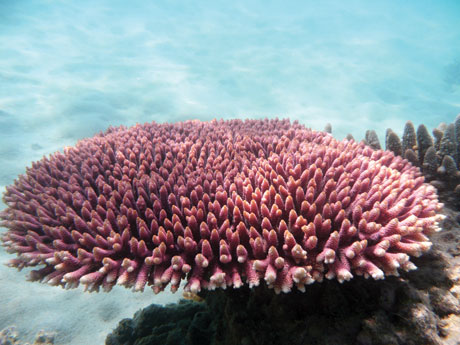
Calcification in changing oceans
July 23, 2014 - What do mollusks, starfish, and corals have in common? Aside from their shared marine habitat, they are all calcifiers - organisms that use calcium from their environment to create hard carbonate skeletons and shells for stability and protection.
The June issue of the Biological Bulletin, published by the Marine Biological Laboratory, addresses the challenges faced by these species as ocean composition changes worldwide.
As atmospheric carbon dioxide rises, the world's oceans are becoming warmer and more acidic. This impact of global climate change threatens the survival of calcifying species because of the reduced saturation of the carbonate minerals required for calcification.
The ability to calcify arose independently in many species during the Cambrian era, when calcium levels in seawater increased. This use of calcium carbonate promoted biodiversity, including the vast array of calcifiers seen today.
"Today, modern calcifiers face a new and rapidly escalating crisis caused by warming and acidification of the oceans with a reduction in availability of carbonate minerals, a change driven by the increase in atmospheric CO2 due to anthropogenic emissions and industrialization. The CO2 itself can also directly cause metabolic stress," write the issue's co-editors, Maria Byrne of the University of Sydney; and Gretchen Hofmann of the University of California-Santa Barbara.
Contributors to the journal address this timely issue across many taxa and from a variety of perspectives, from genomic to ecosystem-wide.
Janice Lough and Neal Cantin of the Australian Institute of Marine Science review historical data on coral reefs to look at potential environmental stressors, while Philippe Dubois (Université Libre de Bruxelles) discusses sea urchin skeletons.
Other researchers address lesser-known organisms that are nevertheless critical to marine ecosystems. Abigail Smith of the University of Otago examines how bryozoans, a group of aquatic invertebrate filter-feeders, increase biodiversity by creating niche habitats, and what features make them particularly sensitive to calcium fluctuations.
Evans and Watson-Wynn (California State University-East Bay) take a molecular approach in a meta-analysis showing that ocean acidification is effecting genetic changes in sea urchin larvae. Several papers take a broader population-based view by studying the effect of ocean acidification on predator-prey interactions in mollusks (Kroeker and colleagues of the University of California-Davis) and oysters (Wright and colleagues of the University of Western Sydney).
"The contributors have identified key knowledge gaps in the fast evolving field of marine global change biology and have provided many important insights," the co-editors write.
By sharing research on this topic from researchers around the world, the Biological Bulletin is raising awareness of some of the greatest threats to the oceans today and emphasizing the global nature of the problem.
The above story is based on materials provided by The Marine Biological Laboratory.
Branching coral Acropora sp. (Photo by Maria Byrne, University of Sydney)
Original Seasons of Australia
C/ - Bureau of Meteorology Australia
When flowers are in bloom, cold weather starts and winds increase, the Maung people of NT know its Wumulukuk – the longest of three seasons, spanning from March to July. More info here:http://bom.ws/y
HEATHCOTE TO BENEFIT FROM 35 HECTARES OF NEW PARKLAND
Pru Goward MP; Minister for Planning, Minister for Women Rob Stokes MP; Minister for the Environment, Minister for Heritage, Minister for the Central Coast, Assistant Minister for Planning - MEDIA RELEASE, Thursday 24th July 2014
Thirty-five hectares of land worth nearly $14 million has been added to Heathcote, Blue Mountains and Lane Cove National Parks and Western Sydney Parklands under a land transfer boosting public open space and bushland.
Planning Minister Pru Goward and Environment Minister Rob Stokes were joined by Member for Heathcote Lee Evans in Waterfall today to announce the Government has added:
• 10 parcels of land comprising 20.09 hectares to the city’s Western Sydney Parklands; and
• 65 parcels of land comprising nearly 15 hectares to the Blue Mountains National Park, Lane Cove National Park and Heathcote National Park
Ms Goward said the Department of Planning & Environment administered the land transfer to the Western Sydney Parklands Trust and the National Parks and Wildlife Division, following consultation between the department and the Office of Environment & Heritage.
“The Department had a central role in acquiring land to create and expand the Western Sydney Parklands, and to continue to improve our stunning national parks,” Ms Goward said.
“For the Parklands, this additional land will add to the wide range of recreational and public facilities enjoyed by Western Sydney locals, including world class sporting grounds, picnic areas, cycling and walking tracks and native bushland.
“The NSW Government will continue to progressively add to the Parklands by purchasing other privately owned land for future generations to use and enjoy.”
Mr Stokes said the properties being transferred to the three national parks – worth around $5.65 million – will enable the National Parks and Wildlife Service to manage the parks with a high level of environmental integrity.
“Government agencies will continue to work collaboratively to boost the value of our national parks, which now total more than seven million hectares across the state,” Mr Stokes said.
Mr Evans said the 6.5 hectares to be added to Heathcote National Park had been purchased from private owners and Government agencies by the Department of Planning & Environment’s Office of Strategic Lands. The seven Waterfall properties are valued at $2.6 million.
“This initiative adds to the open space available to our community for recreation and enjoyment,” Mr Evans said.
“Heathcote National Park has played a role in the lives of many generations, and it’s great to see that role being strengthened.”

1 Million Women + Fighting for Reef
An incredible 21,000+ 1 Million Women members supported our Great Barrier Reef campaign, 'IM Declaring the Reef in Danger'.
And the great news is that our collective voice was heard right at the top of the UNESCO World Heritage Committee, reaching the 2014 chairperson, Her Excellency Sheikha Al Mayassa Bint Hamad Al-Thani, of Qatar.
Sheikha Al Mayassa has written to us personally, thanking 1 Million Women for our "impressive advocacy" - which was made possible by you our members - and assuring us of UNESCO's commitment to protecting the Reef's Outstanding Universal Value.
The Sheikha told us: "You can be assured that UNESCO is very much aware of not only the Reef as one of the most diverse nature habitats in the world but also its vulnerability."
Click here to read the full letter:
It's fantastic to know that we're having impact as 1 Million Women, but the battle to save the Great Barrier Reef from climate change threats, massive new coal mines and port developments and other challenges has just begun.
THE FIGHT FOR THE REEF CONTINUES AND 2015 WILL BE THE CRUCIAL TIME
When the UNESCO World Heritage Committee held its annual meeting in June, hosted in Qatar and chaired by Sheikha Al Mayassa, it voted to maintain international pressure on the Australian Government to step up and protect the Reef, or have it formally declared as 'World Heritage in Danger' when the Committee meets next in Bonn, Germany, in mid-2015.
In preparation for next year's critical meeting in Bonn, 1 Million Women is now writing to the new Chairperson of the World Heritage Committee, Professor Dr Maria Böhmer, the Minister of State from the German Federal Foreign Office. Just as we gained the attention of her predecessor, the Sheikha Al Mayassa, we will be petitioning Professor Böhmer all the way to Bonn.
1 Million Women will not be letting up. Next year is crucial for the Reef, and also for international climate change negotiations, with the United Nations seeking a binding global treaty for cutting carbon pollution post-2020 when nearly 200 nations gather in Paris in December 2015 for the 21st Conference of the Parties (COP21).
We'll update you progressively on our 1 Million Women plans for our Reef campaign next steps and also for COP21. Thank you for joining us and please feel proud that we are being heard. Your support is more important than ever!
Thanks a million,
Natalie Isaacs & Tara Hunt
Co-CEOs

Antarctic lakes theory dries up
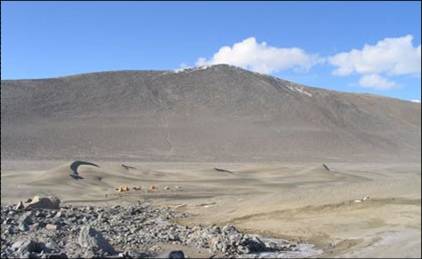
The researcher’s field camp on site at what was previously believed to be Glacial Lake Victoria.
22 July 2014 - Antarctica is the driest continent on Earth, and always has been, with new research showing the previous “mega-lake theory” holds no water.
Researchers from The University of Queensland have refuted previous theories that the Victoria Valley in Antarctica’s Trans-Antarctic Mountains was filled with a mega glacial lake between 20,000 and 8000 years ago.
Associate Professor Hamish McGowan, from UQ’sSchool of Geography, Planning and Environmental Management, said the research meant scientists could now more accurately interpret evidence of past climate and environmental change in the region.
“The McMurdo Dry Valleys of Antarctica are one of the driest places on Earth, thought to be similar to the conditions on Mars, and our research has shown a drier history than previously believed,” Dr McGowan said.
“Our studies show the previously accepted mega-lake, estimated to be 200m deep and covering an area of 100km2, never existed.
“This changes our understanding of this unique landscape’s climate history, and will impact on how future research into mega-lakes is conducted.
“A better understanding of the climate history will enable more accurate predictions of the future climate in the region.”
Dr McGowan said the main evidence for the mega-lake hypothesis was the presence of landscape features interpreted as shorelines.
“Our research has shown that these features are actually evidence of an ancient mass movement of land and that accumulating enough water to generate a mega-lake would not have been possible at the time,” he said.
“There are well-recognised paleoshorelines from other Antarctic lakes, but the shorelines proposed for Glacial Lake Victoria are not consistent.
“Our review of previous research also shows that accumulating such a large volume of water at that time, when temperatures were 8°C colder than present, would be extremely unlikely.”
The UQ researchers used topographic surveys and cosmogenic dating of granite boulders to show that the proposed shorelines are actually the scars of an ancient collapse of the slope, which took place more than 300,000 years ago.
The results support other recent studies which have questioned the mega-lake hypothesis and found no evidence for the existence of a large body of water through soil studies.
The research is published in Geomorphology
BETTER, FASTER INFORMATION ON LOCAL AIR QUALITYRob Stokes MP - Minister for the Environment, Minister for Heritage, Minister for the Central Coast, Assistant Minister for Planning - MEDIA RELEASE- July 14 2014
Residents now have ready access to information about their local air quality after a “new look” index of air quality updates was made available on the homepage of the Office of Environment and Heritage (OEH).
NSW Environment Minister Rob Stokes said easy to read colour coded notifications for nine areas of NSW, including Sydney, are now on the OEH home page, as well as daily forecasts and any current Air Pollution Alerts.
“Hourly updates for Sydney East-Central, South Western and North Western Sydney, the Hunter, Central Coast, Illawarra and regional NSW are now available on the OEH homepage, ensuring local air quality is just a click away.
Mr Stokes said a record number of people subscribed to Air Quality alerts during last year’s October bushfire crisis which showed just how important information about air quality is to the community.
“In response to the community demand OEH made the Air Quality Index easier to access and colour coded the index so it was easier to read and understand.
“Analysis of the state’s air quality in 2013, shows that NSW had a more smoky and dusty year than usual, due to bushfires in Western Sydney in September and across the Blue Mountains, Hunter and Central Coast in October and November,” Mr Stokes said.
“So far this year we have seen a few days of poor air quality during January and February in Western Sydney due to the very hot weather.
“Air quality was good in March and April. During May and June smoke from hazard reduction burning affected air quality as fire managers seized the opportunity to reduce fuel loads ahead of what is forecast to be to be a warm and dry second half of the year.”
NSW Air Quality data is obtained from 40 monitoring stations across NSW, which as well as recording PM10 and finer PM2.5 particles, also monitor Visibility and Ozone – which can reach high levels in the Sydney Basin in particular on hot still days during summer.
That information is compiled into the easy to read NSW Air Quality Index. Alerts are triggered when Ozone, Particle or Visibility readings reach Poor.
Mr Stokes urged the community to sign up to Air Quality Alerts where they can elect to receive alerts and daily forecasts via either SMS or email or both.
Handy Quick Air Quality Links
The OEH Air Quality Index information is available here:
A full summary of the 2013 is available here:
www.environment.nsw.gov.au/aqms/140057nswairqual13.htm
For information on how to reduce exposure to air pollution during bushfires or high
Ozone days go to:www.health.nsw.gov.au/environment/air/Pages/simplesteps.aspx
Information how the NSW government is tackling air pollution issues:

Remarkable Reptiles
9th Aug 2014 - 2pm - 4pm
Come and join us for a couple of hours and meet some of our local wildlife rescuers from Sydney Wildlife and their scaly animal friends.
Looking for something fun and educational that the whole family can be a part of? Fancy getting up close and personal with a few scaly critters? Then this event's for you!!
The Northern Beaches is home to m any species of snakes and reptiles. Find out what some of these species are and where they are likely to be found. Bring along your questions for our reptile specialists.
Don't forget to bring your camera for some happy snaps with our reptile friends.
Where: Meet point provided on booking. Cost: Free! Bookings Essential! Online. In person: Coastal Environment Centre, Lake Park Road, North Narrabeen. Phone: 1300 000 232 (Reception - Option 1)
Irrawong Reserve Community Planting Day - 16th Aug 2014 - 1pm - 4pm
Come along to the beautiful Ingleside Chase Reserve and help the Irrawong Reserve Bushcare Group
Join the Irrawong Reserve Bushcare group in the idyllic surrounds of Ingleside Chase Reserve for an afternoon of bushland restoration and planting native tubestock, and help support one of the largest Bushcare projects hosted by the Pittwater Environmental Foundation and Pittwater Council.
This project is funded by a $250,000 grant from the NSW Environmental Trust, and offers residents the chance to explore this little known and picturesque reserve, rich in native wildlife and habitat for rare and threatened species such as the Powerful Owl, Regent Honeyeater and Giant Burrowing Frog.
Tools, training and a delicious afternoon tea provided!
Where: Walking track entrance at the end of Irrawong Road. Parking available along Irrawong Road, North Narrabeen.
For more information please contact Council's Bushcare Officer on 9970 1367 or email bushcare@pittwater.nsw.gov.au.

Wongala Avenue Planting Day
23rd Aug 2014 - 9am - 12pm
Help us continue the wonderful efforts by local residents during the March event! Local residents are invited to take part in a series of events to assist the Deep Creek Riparian Ecosystem Catchment Project. The grant funding is from Greater Sydney Local Land Services and will support bush regeneration, habitat creation and riparian restoration within Deep Creek, Bilarong Reserve and the Elanora Bushcare site. Come along and help us restore the natural habitat of the Deep Creek Catchment Area!
Where: Meet at the end of the public right of way at the end of Wongala Avenue, Elanora Heights.
Morning tea, tools and training provided. Free native plants will also be on offer for Elanora residents!
For more information contact the Bushcare Officer on 9970 1367 or email bushcare@pittwater.nsw.gov.au
Bush to Bay Walk
24th Aug 2014 - 9am - 11am
Come and join us for a relaxing morning walk taking in the beautiful views and coastal bushland of Pittwater. This walk takes in one of Pittwater's largest bushland reserves on its coastal clifftop. Together with the great variety of native plants in the reserve and beautiful ocean views it is a haven for bushwalkers and wildlife alike. Small animals including the long-nosed bandidcoot and elusive gecko shelter in rock overhangs and crevices, or in dead logs in the eucalypt forest.
Where: Meet point provided upon booking.
Cost: Free! Bookings Essential! Online. In person: Coastal Environment Centre, Lake Park Road, North Narrabeen Phone: 1300 000 232 (Reception - Option 1)
Bilarong Foreshore Walk and Field Day
31st Aug 2014 - 9am - 12pm
Come along and help us restore the natural habitat of the Deep Creek Catchment area!
Join us for a guided walk and bird talk in Bilarong Reserve along the foreshore of Narrabeen Lagoon through to Deep Creek, lend a hand with some weeding/planting and enjoy a scrumptious morning tea at the Deep Creek picnic area!
Where: Bilarong Reserve, end of turning circle near gates.
For more information contact Council's Bushcare Officer on 9970 1367 or email bushcare@pittwater.nsw.gov.au.
Plastic Free July - Take the Challenge!

Bird Watching with Pittwater Natural Heritage Association (PNHA)
 Come Birdwatching with us Sunday July 6, Warriewood Wetlands, one of Sydney's premier bird spots. Book thru pnhabirdwatching@gmail.com
Come Birdwatching with us Sunday July 6, Warriewood Wetlands, one of Sydney's premier bird spots. Book thru pnhabirdwatching@gmail.com
Sunday Birdwatching with PNHA
Would you like to know more about local birds? Our guides can help you see and hear them in these wonderful bushland reserves, and learn about their lives.
Our birdwalks start about 7.30 and end about 10am. Bring Binoculars and some morning tea for afterwards if you like. Older children welcome.
21 September Deep Creek, off Wakehurst Parkway
16 November Irrawong Reserve, Warriewood
Contact us to book and get details of each birdwalk.
Email pnhabirdwatching@gmail.com or ph: 0439 409 202/0402 605 721
Global temperature reaches record high in June following record warmth in May
July 22, 2014 - According to NOAA scientists, the globally averaged temperature over land and ocean surfaces for June 2014 was the highest for June since record keeping began in 1880. It also marked the 38th consecutive June and 352nd consecutive month with a global temperature above the 20th century average. The last below-average global temperature for June was in 1976 and the last below-average global temperature for any month was February 1985. Most of the world experienced warmer-than-average monthly temperatures, with record warmth across part of southeastern Greenland, parts of northern South America, areas in eastern and central Africa, and sections of southern and southeastern Asia. Similar to May, scattered sections across every major ocean basin were also record warm. Notably, large parts of the western equatorial and northeastern Pacific Ocean and most of the Indian Ocean were record warm or much warmer than average for the month. A few areas in North America, Far East Russia, and small parts of central and northeastern Europe were cooler or much cooler than average.
A monthly summary (HERE) from NOAA's National Climatic Data Center in Asheville, NC, is part of the suite of climate services NOAA provides to government, the business sector, academia and the public to support informed decision making.
Selected significant climate anomalies and events: June 2014.
Global temperature highlights: June
The combined average temperature over global land and ocean surfaces for June 2014 was record high for the month at 61.20°F (16.22°C), or 1.30°F (0.72°C) above the 20th century average of 59.9°F (15.5°C). This surpasses the previous record, set in 2010, by (0.05°F) 0.03°C. Nine of the ten warmest Junes on record have all occurred during the 21st century, including each of the past five years. The margin of error associated with this temperature is +/- 0.16°F (0.09°C).
The June global land temperature was the seventh highest for June on record at 1.71°F (0.95°C) above the 20th century average of 55.9°F (13.3°C). The margin of error is +/- 0.25°F (0.14°C). The seven highest June global land surface temperatures have occurred in the past decade.
Thirty-one countries across every continent, with the exception of Antarctica, reported at least one station with a record warm June temperature. The period of record varies by station. Some national temperature highlights include:
New Zealand observed its warmest June since national records began in 1909. The warmth was notable for both its intensity and coverage, with above-average temperatures from the top of the North Island to the bottom of the South Island.
France observed its fifth warmest June in the country's 115-year period of record at 2.3°F (1.3°C) above the 1981-2010 average. A week-long heat wave contributed to the overall warmth for the month.
Parts of Greenland were record warm during June. Kangerlussuaq in southwestern Greenland observed its record highest maximum June temperature of 23.2°C (73.8°F) on June 15, surpassing the previous record of 23.1°C (73.6°F) set in both 1988 and 2002. Records at this station date back to 1958.
For the ocean, the June global sea surface temperature was 1.15°F (0.64°C) above the 20th century average of 61.5°F (16.4°C), the highest for June on record. This surpasses the previous all-time record for any month by 0.09°F (0.05°C), set in June 1998 and tied in October 2003, July 2009, and just last month in May 2014. The margin of error is +/- 0.07°F (0.04°C).
Although neither El Niño nor La Niña conditions were present across the central and eastern equatorial Pacific Ocean during June 2014, NOAA's Climate Prediction Center estimates that there is about a 70 percent chance that El Niño conditions will develop during Northern Hemisphere summer 2014 and 80 percent chance it will develop during the fall and winter.
Polar ice highlights: June
The average Arctic sea ice extent for June was 4.4 million square miles, 220,000 square miles (4.9 percent) below the 1981-2010 average and the sixth smallest June extent since records began in 1979, according to the National Snow and Ice Data Center. The seasonal sea ice extent decline during June was faster than average, with rapid ice loss near the end of month.
On the opposite pole, the Antarctic sea ice extent for June was 5.9 million square miles, 510,000 square miles (9.6 percent) above the 1981-2010 average. This marked the largest June Antarctic sea ice extent since records began in 1979, surpassing the previous record large June Antarctic sea ice extent that occurred in 2010 by about 100,000 square miles. Seven of the past 12 months have had a record large Antarctic sea ice extent.
Combining the Arctic and Antarctic sea ice, June global sea ice was 10.3 million square miles, 2.9 percent above the 1981-2010 average. This was the third largest global June sea ice extent on record and the largest since 1982.
Precipitation highlights: June
Extreme wetness was observed during June over regions including central North America and parts of eastern and northern Europe. Extreme dryness was scattered across different parts of the globe, including much of South Asia and Australia.
In India, the southwest monsoon onset over Kerala occurred on June 6, five days later than the normal date of June 1. For the period June 1-30, rainfall across the country was just 60 percent of the 1951-2000 average for the country as a whole. Every region experienced rainfall deficits during this period, ranging from 43 percent of average in Central India to 72 percent of average on the South Peninsula. The monsoon season lasts from early June through late September.
Australia received 68 percent of average rainfall during June. Western Australia received just 28 percent of their average rainfall for the month, the seventh lowest for June for the state.
Global temperature highlights: Year-to-date
The first half of 2014 (January-June) tied with 2002 as the third warmest such period on record, with a combined global land and ocean average surface temperature 1.21°F (0.67°C) above the 20th century average of 56.3°F (13.5°C). Only 2010 and 1998 were warmer. Thirteen of the past fourteen such periods have occurred during the 21st century. The margin of error is +/- 0.18°F (0.10°C).
The January-June worldwide land surface temperature was 1.87°F (1.04°C) above the 20th century average, tying with 1998 and 2005 as the fourth warmest such period on record. The margin of error is +/- 0.41°F (0.23°C).
The global ocean surface temperature for the year to date was 0.95°F (0.53°C) above average, the third warmest such period on record behind 1998 and 2010. The margin of error is +/-0.09°F (0.05°C).
On the Web:
Global Climate Report for June 2014:http://www.ncdc.noaa.gov/sotc/global/2014/06/
NOAA Climate Portal: http://www.climate.gov
The above story is based on materials provided by NOAA/National Climatic Data Center. June 2014 Blended Land and Sea Surface Temperature Percentiles. Credit: NOAA
The birth of topological spintronics: New material combo could lead to more efficient computers
July 23, 2014 – The discovery of a new material combination that could lead to a more efficient approach to computer memory and logic will be described in the journal Nature on July 24, 2014. The research, led by Penn State University and Cornell University physicists, studies "spin torque" in devices that combine a standard magnetic material with a novel material known as a "topological insulator." The team's results show that such a scheme can be 10 times more efficient for controlling magnetic memory or logic than any other combination of materials measured to date.
"This is a really exciting development for the field because it is the first promising indication that we actually may be able to build a practical technology with these topological insulator materials, which many condensed-matter physicists have been studying with spintronics applications as the motivation," said co-principal-investigator Nitin Samarth, a professor of physics and the George A. and Margaret M. Downsbrough Department Head of Physics at Penn State. "Our experiment takes advantage of the very special surface of bismuth selenide - a material that is a topological insulator - which inherently supports the flow of electrons with an oriented spin," he said. "Our collaborators at Cornell found that, at normal room temperatures, we can use these spin-oriented electrons to very efficiently control the direction of the magnetic polarity in the adjacent material."
Professor Dan Ralph, the co-principal-investigator at Cornell University, said "Our team's research has overcome one of the key challenges to developing a spintronics technology based on spin-orbit coupling - the efficiency with which an ordinary charge current can be converted into a spin current." The experiment used thin-film materials that were synthesized in Samarth's molecular-beam-epitaxy facility at Penn State by Graduate Student Joon Sue Lee and Research Associate Anthony Richardella. Graduate Student Alex Mellnik, in Ralph's laboratory at Cornell, fashioned these thin films into devices and carried out the spin-torque measurements. Professor Eun-ah Kim and her group at Cornell developed the theoretical interpretation of the experiments.
Earlier this year, Samarth's group also co-authored a manuscript in Nature Communications with Professor Zahid Hasan's group at Princeton University. In that experiment, a systematic series of ultrathin bismuth selenide films synthesized at Penn State were used by Hasan and Graduate Student Su-yang Xu of his lab to demonstrate how the spin orientation of surface electrons in a topological insulator could be manipulated at room temperature using quantum tunneling. "The rapid progress shown in this field at Penn State and at laboratories around the world indicates that 'topological spintronics' shows great promise of becoming an attractive offshoot of more traditional approaches to spintronics technology," Samarth said.
A. R. Mellnik, J. S. Lee, A. Richardella, J. L. Grab, P. J. Mintun, M. H. Fischer, A. Vaezi, A. Manchon, E.-A. Kim, N. Samarth, D. C. Ralph. Spin-transfer torque generated by a topological insulator. Nature, 2014; 511 (7510): 449 DOI:10.1038/nature13534
This photo shows Nitin Samarth in his research lab at Penn State working with the molecular beam epitaxy equipment, which provides an ultra-pure environment for his research team's experiments. Credit: Penn State University
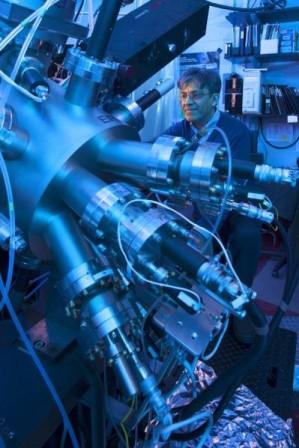
How fussy pandas maintain a balanced bamboo diet - 22 July 2014
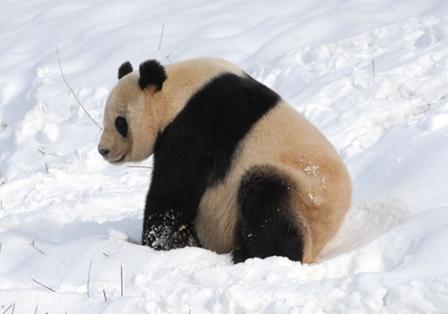
Researchers found that giant pandas switch between four different bamboo diets to gain key nutrients required to successfully reproduce.
Pandas are famously fussy eaters, but new research suggests there is method to their madness, with the animals switching between different species and parts of bamboo plants to maintain a balanced diet and reproduce.
According to the research - led by academics at the Chinese Academy of Sciences and co-authored by Professor David Raubenheimer from the University of Sydney's Charles Perkins Centre, Faculty of Veterinary Science and School of Biological Sciences - pandas migrate long distances to switch between the shoots and leaves of two different bamboo varieties. The four distinctive diets provide different levels of key nutrients, with shifts between the diets enabling the pandas to balance their calcium, phosphorus and nitrogen needs to successfully reproduce.
"We were surprised to discover that pandas arrange their migratory and reproductive habits around the nutritional qualities of two specific bamboo varieties, arrow bamboo and wood bamboo," said Professor Raubenheimer, Leonard P Ullmann Chair in Nutritional Ecology at the University of Sydney's Charles Perkins Centre and a co-author of the research.
The findings have profound implications for the conservation of China's iconic species, particularly given the accelerating environmental changes that threaten to transform the prevalence and location of the two bamboo species.
"Pandas in the Qinling Mountains of China move from valleys up mountains in spring, and then move back again in autumn," said Professor Raubenheimer.
"The summer forage contains high levels of protein, needed for muscle growth, but is very low in calcium, which is required for milk production and bone growth. By contrast, the winter forage has high levels of calcium but is low in protein.
"It is only by migrating seasonally, therefore, that pandas can obtain enough of both essential nutrients to breed."
The researchers tracked six pandas in China's Foping Reserve with GPS collars over a period of six years, also conducting behavioural analyses and studying food and dung samples during the four foraging cycles. The research is published in the journal Functional Ecology.
The nutritional balancing observed in the pandas is a key factor in the survival of the endangered species. Despite being exclusively herbivorous, the giant panda retains the simple stomach and short gastrointestinal tract of its carnivorous bear cousins. As a result, the preservation of its highly specialised diet is crucial to the continued existence of the species.
"As this study has revealed, it is critical for us to understand the nutritional basis of food selection when managing endangered species. This is true not only for the giant pandas of the Qinling Mountains, but also, for example, for the highly endangered New Zealand kakapo parrot, spider monkeys in Bolivia and the wonderful mountain gorillas of Uganda," said Professor Raubenheimer.
The study is the first study to use nutritional geometry, a system pioneered by Professor Raubenheimer and Professor Stephen Simpson, Academic Director of the Charles Perkins Centre, to relate diet to reproduction in the wild. The Geometric Framework is a modelling approach that explores how an animal solves the problem of balancing multiple and changing nutrient needs in a multidimensional and variable nutritional environment. It has been used to analyse the feeding behaviours of many species, including mice, locusts, flies, spider monkeys, gorillas, grizzly bears and humans.

Large twin study suggests that language delay due more to nature than nurture
July 21, 2014 – A study of 473 sets of twins followed since birth found that compared to single-born children, 47 percent of 24-month-old identical twins had language delay compared to 31 percent of non-identical twins. Overall, twins had twice the rate of late language emergence of single-born children. None of the children had disabilities affecting language acquisition. The results of the study were published in the June 2014 Journal of Speech, Language, and Hearing Research.
University of Kansas Distinguished Professor Mabel Rice, lead author, said that all of the language traits analyzed in the study - vocabulary, combining words and grammar - were significantly heritable with genes accounting for about 43 percent of the overall twins' deficit.
The "twinning effect" - a lower level of language performance for twins than single-born children - was expected to be comparable for both kinds of twins, but was greater for identical twins, said Rice, strengthening the case for the heritability of language development.
"This finding disputes hypotheses that attribute delays in early language acquisition of twins to mothers whose attention is reduced due to the demands of caring for two toddlers," said Rice. "This should reassure busy parents who worry about giving sufficient individual attention to each child."
However, said Rice, prematurity and birth complications, more common in identical twins, could also affect their higher rates of language delay. A study of pregnancy and birth risks for late talking in twins is currently underway by the study authors.
Further, the study will continue at least until 2017 to continue to follow the twins through preschool and school years up to adolescence to answer the question of whether late-talking twins do catch up to their peers.
"Twin studies provide unique opportunities to study inherited and environmental contributions to language acquisition," said Rice. "The outcomes inform our understanding of how these influences contribute to language acquisition in single born children, as well."
Late language emergence means that a child's language is below age and gender expectations in the number of words they speak and combining two or more words into sentences. In this study 71 percent of two-year-old twins were not combining words compared to 17 percent of single-born children.
While previous behavioral genetics studies of toddlers have largely focused on vocabulary, the researchers introduced an innovative measure of early grammatical ability on the correct use of the past tense and the "to be" and "to do" verbs. The measure was inspired by the Rice/Wexler Test of Early Grammar Impairment, developed by Rice and Massachusetts Institute of Technology Professor Kenneth Wexler in 2001. It was the first test to detect the subtle but common language disorder, Specific Language Impairment.
Rice's collaborators in the international longitudinal project that began in 2002 are Professors Cate Taylor and Stephen Zubrick from the Telethon Kids Institute in Perth, Western Australia, and Professor Shelley Smith at the University of Nebraska Medical Center.
The study population is located in the vicinity of Perth, Western Australia, because it is demographically practically identical to Kansas City and several other U.S. Midwestern states. But in Australia health records are available and the Western Australia Twin Registry is a unique resource for researchers since it is a record of all multiple births, said Rice.
The research group has followed the development of 1000 sets of Western Australian twins from their first words. In 2012, the group was granted $2.8 million by the National Institute for Deafness and Other Communication Disorders for a fourth five-year-cycle that will enable researchers to continue to monitor the twins as they develop through adolescence. In addition to formal language tests, researchers have collected genetic and environmental data as well as assessments with the twins' siblings.
M. L. Rice, S. R. Zubrick, C. L. Taylor, J. Gayan, D. E. Bontempo.Late language emergence in 24 month twins: Heritable and increased risk for LLE in twins.Journal of Speech, Language, and Hearing Research, 2013; DOI: 10.1044/1092-4388(2013/12-0350)
University of Kansas Distinguished Professor Mabel Rice directs a longitudinal study of language development in 1,000 sets of Australian twins from birth through adolescence. Credit: Telethon Kids Institute, Perth, Western Australia
Way too close to a whale in Argentina - Published on 20 Jul 2014
Forty five per cent rise in diagnostic imaging tests by Australian GPs - 22 July 2014
A 45 per cent rise in diagnostic imaging tests ordered by Australian GPs is being driven by increasing GP visits, a rising number of problems managed at consultations and a higher likelihood that GPs order imaging tests for these problems, according to a new University of Sydney studyreleased today.
Based on a long term national survey of 9,802 GPs between 2002 and 2012, the report draws on data from more than 980,000 GP-patient encounter records to assess the extent to which GP's order tests in line with diagnostic imaging guidelines.
"Most imaging tests ordered by GPs comply with expert guidelines," says the report's lead author, Dr Helena Britt.
"However, the study indicates that GPs are too quick to order imaging tests during their initial assessment of back problems. GPs are twice as likely to order an imaging test during the initial examination of new back-problems compared to follow-up consultations.
"Expert guidelines advise caution in ordering tests for presenting back problems unless there is a 'red flag' to prompt investigation," says Dr Britt.
"'Red flags' can include issues such as major trauma, unexplained weight loss, unexplained fever, history of malignancy, inflammatory conditions and neurological issues. However, patients with 'red flags' account for a small proportion of people presenting with new back problems."
Overall, diagnostic radiology (plain x-rays) was the test type most frequently ordered by GPs (54 per cent), followed by computerised tomography (36 per cent), magnetic resonance imaging (5 per cent) and ultrasound (3 per cent). The study also notes a trend away from diagnostic radiology to CT and MRI orders, in line with changing recommendations in the guidelines.
The four strongest predictors of whether GPs order a diagnostic imaging test are:
• Number of problems managed at the GP-visit - each additional problem managed
increases the probability of testing by 41 per cent.
• Type of medical problem managed - particularly musculoskeletal problems, female
genital issues, pregnancy and family planning issues.
• Patient characteristics - females, those aged 45 years and older, and new patients.
• GP characteristics - women, GPs aged 35-44 years, those in solo practice, and those in a practice co-located with an imaging service.
Heartbroken Dog Mourns Owner

Childcare reforms must not come at expense of quality: policy expert
By Dr Elizabeth Hill, co-convenor of the Australian Work and Family Policy Roundtable - 23 July 2014
The Productivity Commission's recommendation for a single means-tested childcare subsidy is the most innovative aspect of its draft report, released yesterday.
The subsidy could facilitate a more sustainable and equitable system of public support for childcare and early childhood learning into the future. The subsidy is designed to be linked to what the Commission calls the "deemed reasonable cost" of quality care and education services.
Currently, government subsidies are calculated on the price that families pay for such services and under this system the cost of childcare has risen dramatically.
The principle that government support for the cost of childcare should be linked to the actual cost of providing a service is an innovation that would see government support focused on the necessary factors of service provision - rent, wages, educational resources, food, safety equipment and a small profit margin.
Parents who want their children to learn a second language, enjoy specialist dance or music classes would be free to fund those additional activities out of their own pocket.
The draft report affirms the importance of high quality care and argues the National Quality Framework must be retained and extended to all government funded services. But there is also a recommendation that the framework be modified. This is of concern, in particular the desire to introduce flexibility in how staffing ratios interact with qualification requirements.
Under current framework arrangements the number of university-trained early childhood education and care teaching staff employed in a centre is determined according to the total number of children attending a service. The Commission recommends relaxing this provision, basing the calculation instead on the number of children above three years old.
In this, and other recommendations made by the Commission in the draft report, the minimum qualifications of staff employed to work with zero to three-year-old children would also be set at the Certificate III level. This ignores the research evidence that demonstrates the positive relationship between highly trained staff and the education and care outcomes for zero to three-year-olds.
Other forms of "flexibility" in how the framework is implemented would include managing staff and qualification ratios on a weekly or monthly basis rather than in real time. These measures dilute the quality provisions.
Shift work, irregular work hours and long commutes mean that regular centre-based services do not suit all households. Part of the Commission's approach to improving childcare accessibility and affordability is the recommendation to extend public subsidies to households using qualified nannies and other Certificate III workers who satisfy the quality framework. Insisting on a minimal training requirement for nannies will go some way to ensuring the quality of publicly subsidized nanny care and education.
However this is only one side of the employment coin. The commission is silent on the issue of nanny working conditions and wages - a serious omission. International research evidence on the working conditions and wages of privately employed nannies shows that these, mostly women, are amongst the most exploited workers in the world. Children cared for by nannies need to be protected through regulation, but so do the workers themselves.
The Commission's recommendation to change the provisions of working visas for au pairs raises similar concerns. Families using au pairs would not be eligible to claim a public subsidy, but by expanding and normalising the au pair system Australian households will increasingly expect to be able to access vulnerable, young female labour to care for their children. Again, international research raises concerns about the vulnerability of these workers to exploitation, unpredictable work hours and physical and emotional abuse.
Australia has a relatively diverse set of services that can be strengthened. But the need for improved accessibility and affordability should not come at the expense of high quality provision or worker exploitation.
Dr Elizabeth Hill is a Senior Lecturer in the Department of Political Economy and co-convenor of the Australian Work and Family Policy Roundtable.
October Pumpkin Regattas
Annual Pumpkin Regattas take place in the USA soon - each October people race in Atlantic Giant pumpkins down rivers, across lakes, and on the ocean front.
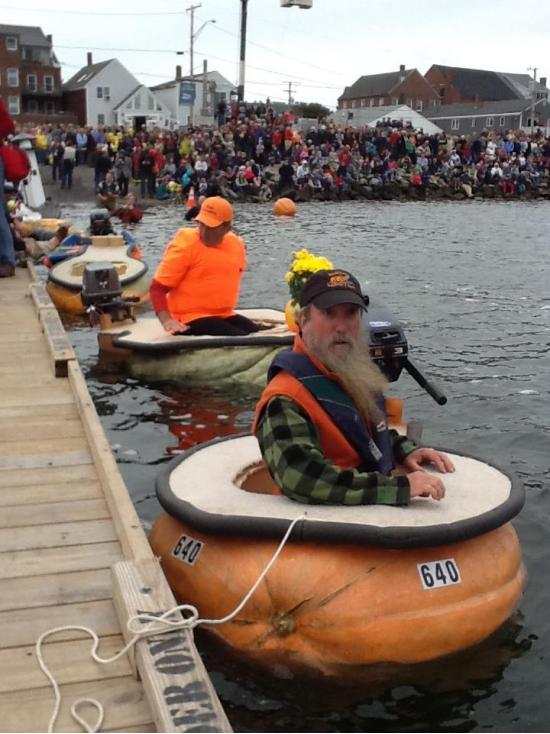
Health Papers published this week:
Eating probiotics regularly may improve your blood pressure
July 21, 2014 - Eating probiotics regularly may modestly improve your blood pressure, according to new research in the American Heart Association journal Hypertension.
Probiotics are live microorganisms (naturally occurring bacteria in the gut) thought to have beneficial effects; common sources are yogurt or dietary supplements.
"The small collection of studies we looked at suggest regular consumption of probiotics can be part of a healthy lifestyle to help reduce high blood pressure, as well as maintain healthy blood pressure levels," said Jing Sun, Ph.D., lead author and senior lecturer at the Griffith Health Institute and School of Medicine, Griffith University, Gold Coast, Queensland, Australia. "This includes probiotics in yogurt, fermented and sour milk and cheese, and probiotic supplements."
Analyzing results of nine high-quality studies examining blood pressure and probiotic consumption in 543 adults with normal and elevated blood pressure, researchers found:
Probiotic consumption lowered systolic blood pressure (the top number) by an average 3.56 millimeters of mercury (mm Hg) and diastolic blood pressure (the lower number) by an average 2.38 mm Hg, compared to adults who didn't consume probiotics.
The positive effects from probiotics on diastolic blood pressure were greatest in people whose blood pressure was equal to or greater than 130/85, which is considered elevated.
Consuming probiotics for less than eight weeks didn't lower systolic or diastolic blood pressure.
Probiotic consumption with a daily bacteria volume of 109-10 12 colony-forming units (CFU) may improve blood pressure. Consumption with less than 109 CFU didn't lower blood pressure. CFU is the amount of bacteria or the dose of probiotics in a product.
Probiotics with multiple bacteria lowered blood pressure more than those with a single bacteria.
"We believe probiotics might help lower blood pressure by having other positive effects on health, including improving total cholesterol and low-density lipoprotein, or LDL, cholesterol; reducing blood glucose and insulin resistance; and by helping to regulate the hormone system that regulates blood pressure and fluid balance," Sun said.
"The studies looking at probiotics and blood pressure tend to be small," Sun said. "Moreover, two studies had a short duration of three to four weeks of probiotic consumption, which might have affected the overall results of the analysis.
Additional studies are needed before doctors can confidently recommend probiotics for high blood pressure control and prevention, she said.
S. Khalesi, J. Sun, N. Buys, R. Jayasinghe. Effect of Probiotics on Blood Pressure: A Systematic Review and Meta-Analysis of Randomized, Controlled Trials.Hypertension, 2014; DOI:10.1161/HYPERTENSIONAHA.114.03469
Vaccine for dust-mite allergies created
July 22, 2014 – If you're allergic to dust mites (and chances are you are), help may be on the way. Researchers at the University of Iowa have developed a vaccine that can combat dust-mite allergies by naturally switching the body's immune response. In animal tests, the nano-sized vaccine package lowered lung inflammation by 83 percent despite repeated exposure to the allergens, according to the paper, published in the AAPS (American Association of Pharmaceutical Scientists) Journal. One big reason why it works, the researchers contend, is because the vaccine package contains a booster that alters the body's inflammatory response to dust-mite allergens.
"What is new about this is we have developed a vaccine against dust-mite allergens that hasn't been used before," says Aliasger Salem, professor in pharmaceutical sciences at the UI and a corresponding author on the paper.
Dust mites are ubiquitous, microscopic buggers who burrow in mattresses, sofas, and other homey spots. They are found in 84 percent of households in the United States, according to a published, national survey. Preying on skin cells on the body, the mites trigger allergies and breathing difficulties among 45 percent of those who suffer from asthma, according to some studies. Prolonged exposure can cause lung damage.
Treatment is limited to getting temporary relief from inhalers or undergoing regular exposure to build up tolerance, which is long term and holds no guarantee of success.
"Our research explores a novel approach to treating mite allergy in which specially-encapsulated miniscule particles are administered with sequences of bacterial DNA that direct the immune system to suppress allergic immune responses," says Peter Thorne, public health professor at the UI and a contributing author on the paper. "This work suggests a way forward to alleviate mite-induced asthma in allergy sufferers."
The UI-developed vaccine takes advantage of the body's natural inclination to defend itself against foreign bodies. A key to the formula lies in the use of an adjuvant - which boosts the potency of the vaccine - called CpG. The booster has been used successfully in cancer vaccines but never had been tested as a vaccine for dust-mite allergies. Put broadly, CpG sets off a fire alarm within the body, springing immune cells into action. Those immune cells absorb the CpG and dispose of it.
This is important, because as the immune cells absorb CpG, they're also taking in the vaccine, which has been added to the package, much like your mother may have wrapped a bitter pill around something tasty to get you to swallow it. In another twist, combining the antigen (the vaccine) and CpG causes the body to change its immune response, producing antibodies that dampen the damaging health effects dust-mite allergens generally cause.
In lab tests, the CpG-antigen package, at 300 nanometers in size, was absorbed 90 percent of the time by immune cells, the UI-led team reports. The researchers followed up those experiments by giving the package to mice and exposing the animals to dust-mite allergens every other day for nine days total. In analyses conducted at the UI College of Public Health, packages with CpG yielded greater production of the desirable antibodies, while lung inflammation was lower than particles that did not contain CpG, the researchers report.
"This is exactly what we were hoping for," says Salem, whose primary appointment is in the College of Pharmacy.
The researchers will continue to test the vaccine in the hope that it can eventually be used to treat patients.
The above story is based on materials provided by University of Iowa.
Paracetamol no better than placebo for lower back pain
July 24, 2014 - Paracetamol is no better than placebo at speeding recovery from acute episodes of lower back pain or improving pain levels, function, sleep, or quality of life, according to the first large randomised trial to compare the effectiveness of paracetamol with placebo for low-back pain. The findings, published in The Lancet, question the universal endorsement of paracetamol as the first choice painkiller for low-back pain, say the authors. Low-back pain is the leading cause of disability worldwide. National clinical guidelines universally recommend paracetamol as the first choice analgesic for acute low-back pain, despite the fact that no previous studies have provided robust evidence that it is effective in people with low-back pain.
The Paracetamol for Low-Back Pain Study (PACE) randomly assigned 1652 individuals (average age 45 years) with acute low-back pain from 235 primary care centres in Sydney, Australia to receive up to 4 weeks of paracetamol in regular doses (three times a day; equivalent to 3990 mg per day), paracetamol as needed (maximum 4000 mg per day), or placebo. All participants received advice and reassurance and were followed-up for 3 months.
No differences in the number of days to recovery were found between the treatment groups - median time to recovery was 17 days in the regular paracetamol group, 17 days in the as-needed paracetamol group, and 16 days in the placebo group. Paracetamol also had no effect on short-term pain levels, disability, function, sleep quality, or quality of life. The number of participants reporting adverse events was similar between the groups.
"Simple analgesics such as paracetamol might not be of primary importance in the management of acute lower back pain," said lead author Dr Christopher Williams from the George Institute for Global Health at the University of Sydney in Australia. "The results suggest we need to reconsider the universal recommendation to provide paracetamol as a first-line treatment for low-back pain, although understanding why paracetamol works for other pain states but not low-back pain would help direct future treatments."
He adds, "In view of the quick timeframe in which participants in our trial improved compared with other cohorts, it would be interesting to see whether advice and reassurance (as provided in our trial) might be a more effective than pharmacological strategies for acute episodes of low-back pain."
Writing in a linked Comment, Bart Koes and Wendy Enthoven from Erasmus MC, University Medical Center in Rotterdam, Netherlands say, "Williams and colleagues are to be applauded for tackling this research question on a topic that has been without debate and evidence for such a long time…Although the findings from this high-quality trial are clear, the content of guidelines should not be changed on the basis of a single trial; more robust and consistent evidence, including verification of the results in other populations, is needed…Furthermore, efforts to establish if prescription of other simple analgesics has additional benefit to advice and reassurance of the favourable prognosis for acute low-back pain are very welcome."
Christopher M Williams, Christopher G Maher, Jane Latimer, Andrew J McLachlan, Mark J Hancock, Richard O Day, Chung-Wei Christine Lin. Efficacy of paracetamol for acute low-back pain: a double-blind, randomised controlled trial. The Lancet, 2014; DOI: 10.1016/S0140-6736(14)60805-9
Understanding how neuro cells turn cancerous
July 22, 2014 - Scientists from the Sloan-Kettering Institute for Cancer Research in New York with the help of Plymouth University Peninsula Schools of Medicine and Dentistry have completed research which for the first time brings us nearer to understanding how some cells in the brain and nervous system become cancerous. The results of their study are published in the journalCancer Cell.
The research team led by Sloan-Kettering researchers studied a tumor suppressor called Merlin.
The results of the study have identified a new mechanism whereby Merlin suppresses tumors, and that the mechanism operates within the nucleus. The research team has discovered that unsuppressed tumor cells increase via a core signalling system, the hippo pathway, and they have identified the route and method by which this signalling occurs.
By identifying the signalling system and understanding how, when present, Merlin suppresses it, the way is open for research into drug therapies which may suppress the signalling in a similar way to Merlin.
tumor suppressors exist in cells to prevent abnormal cell division in our bodies. The loss Merlin leads to tumors in many cell types within our nervous systems. There are two copies of a tumor suppressor, one on each chromosome that we inherit from our parents. The loss of Merlin can be caused by random loss of both copies in a single cell, causing sporadic tumors, or by inheriting one abnormal copy and losing the second copy throughout our lifetime as is seen in the inherited condition of neurofibromatosis type 2 (NF2).
No effective therapy for these tumors exists, other than repeated invasive surgery aiming at a single tumor at a time and which is unlikely to eradicate the full extent of the tumors, or radiotherapy.
Professor Oliver Hanemann, Director of the Institute of Translational and Stratified Medicine at Plymouth University Peninsula Schools of Medicine and Dentistry, and who led the Plymouth aspect of the study, commented: "We have known for some time that the loss of the tumor suppressor Merlin resulted in the development of nervous system tumors, and we have come tantalisingly close to understanding how this occurs. Our joint study with colleagues at the Sloan-Kettering Institute for Cancer Research shows for the first time how this mechanism works. By understanding the mechanism, we can use this knowledge to develop effective drug therapies - in some cases adapting existing drugs - to treat patients for whom current therapies are limited and potentially devastating."
Wei Li, Jonathan Cooper, Lu Zhou, Chenyi Yang, Hediye Erdjument-Bromage, David Zagzag, Matija Snuderl, Marc Ladanyi, C. Oliver Hanemann, Pengbo Zhou, Matthias A. Karajannis, Filippo G. Giancotti. Merlin/NF2 Loss-Driven Tumorigenesis Linked to CRL4DCAF1-Mediated Inhibition of the Hippo Pathway Kinases Lats1 and 2 in the Nucleus. Cancer Cell, 2014; 26 (1): 48 DOI:10.1016/j.ccr.2014.05.001
Anti-cancer drug kicks HIV out of hiding
July 22, 2014 – A pilot study by HIV researchers from Aarhus University and Aarhus University Hospital in Denmark has shown that an anti-cancer drug can activate hidden HIV. The researchers found that the anti-cancer drug romidepsin increased the virus production in HIV-infected cells between 2.1 and 3.9 times above normal and that the viral load in the blood increased to measurable levels in five out of six patients with HIV infection.
A pilot study
The results were presented today as breaking news at the annual international AIDS conference in Melbourne, Australia. The pilot study is part of a larger study investigating the possibilities of combining activation of HIV and a vaccine to strengthen the ability of the immune system to fight HIV.
The group of researchers from Aarhus University and Aarhus University Hospital has previously shown that the drug panobinostat can activate hidden HIV in the cells but for the first time the researchers have been demonstrated that it is possible to activate hidden virus to levels readably detectable in the blood by standard methods.
Activated HIV leaves traces
HIV can hide in a "state of hibernation" in the so-called CD4 cells. These cells are a part of the body's immune system, but the CD4 cells cannot fight the virus themselves; killer T-cells can. However, killer T-cells cannot tell if a CD4 cell contains "hibernating" HIV virus. That is why HIV continues to be a chronic disease. HIV infection can be kept down by medicine but there is still no cure which can eradicate HIV from the body.
The results presented by the researchers at Aarhus University Hospital and Aarhus University are interesting; when the virus is activated and moves towards the bloodstream it leaves a trace on the outside of the infected CD4 cells. In principle this means that the killer T cells can now trace and destroy the HIV-infected CD4 cells.
Immune system is not strong enough
In addition to measuring the increased viral load in six HIV-infected test persons, the researchers have tested the side effects of the medicine. The test persons experienced transient fatigue and nausea, which are known side effects of romidepsin. And so, the pilot study does not cause immediate concern for special side effects in HIV-infected persons.
Moreover, the researchers have investigated if the total HIV reservoir in the body is lowered when the killer T-cells are now able to trace and destroy the HIV-infected CD4 cells. However, the researchers have not been able to demonstrate that.
The immune system's reaction to the exposed HIV-infected cells may not itself be strong enough to clear the cells from the body. But the mechanism to activate and expose the HIV virus may potentially one day be part of a combination of drugs which together can eradicate HIV infection, says senior researcher and medical doctor Ole Schmeltz Søgaard.
Still a long way to go
The next step is a bigger trial where the researchers will combine romidepsin activation of hidden HIV with a vaccine (vacc-4x) to strengthen the ability of killer T-cells to fight hiv virus.
We have now shown that we can activate a hibernating virus with romidepsin and that the activated virus moves into the bloodstream in large amounts. This is a step in the right direction; but there is still a long way to go and many obstacles to overcome before we can start talking about a cure against HIV, says Ole Schmeltz Søgaard.
The above story is based on materials provided by Aarhus University.
How stress hormones promote brain's building of negative memories
July 23, 2014 - When a person experiences a devastating loss or tragic event, why does every detail seem burned into memory; whereas, a host of positive experiences simply fade away? It's a bit more complicated than scientists originally thought, according to a study recently published in the journal Neuroscience by Arizona State University researcher Sabrina Segal.
When people experience a traumatic event, the body releases two major stress hormones: norepinephrine and cortisol. Norepinephrine boosts heart rate and controls the fight-or-flight response, commonly rising when individuals feel threatened or experience highly emotional reactions. It is chemically similar to the hormone epinephrine - better known as adrenaline.
In the brain, norepinephrine in turn functions as a powerful neurotransmitter or chemical messenger that can enhance memory.
Research on cortisol has demonstrated that this hormone can also have a powerful effect on strengthening memories. However, studies in humans up until now have been inconclusive - with cortisol sometimes enhancing memory while at other times having no effect.
A key factor in whether cortisol has an effect on strengthening certain memories may rely on activation of norepinephrine during learning, a finding previously reported in studies with rats.
In her study, Segal, an assistant research professor at the Institute for Interdisciplinary Salivary Bioscience Research (IISBR) at ASU, and her colleagues at the University of California- Irvine showed that human memory enhancement functions in a similar.
Conducted in the laboratory of Larry Cahill at U.C. Irvine, Segal's study included 39 women who viewed 144 images from the International Affective Picture Set. This set is a standardized picture set used by researchers to elicit a range of responses, from neutral to strong emotional reactions, upon view.
Segal and her colleagues gave each of the study's subjects either a dose of hydrocortisone - to simulate stress - or a placebo just prior to viewing the picture set. Each woman then rated her feelings at the time she was viewing the image, in addition to giving saliva samples before and after. One week later, a surprise recall test was administered.
What Segal's team found was that "negative experiences are more readily remembered when an event is traumatic enough to release cortisol after the event, and only if norepinephrine is released during or shortly after the event."
"This study provides a key component to better understanding how traumatic memories may be strengthened in women," Segal added. "because it suggests that if we can lower norepinephrine levels immediately following a traumatic event, we may be able to prevent this memory enhancing mechanism from occurring, regardless of how much cortisol is released following a traumatic event."
Further studies are needed to explore to what extent the relationship between these two stress hormones differ depending on whether you are male or female, particularly because women are twice as likely to develop disorders from stress and trauma that affect memory, such as in Posttraumatic Stress Disorder (PTSD). In the meantime, the team's findings are a first step toward a better understanding of neurobiological mechanisms that underlie traumatic disorders, such as PTSD.
The above story is based on materials provided by Arizona State University College of Liberal Arts and Sciences.
Disclaimer: These articles are not intended to provide medical advice, diagnosis or treatment. Views expressed here do not necessarily reflect those of Pittwater Online News or its staff.
Foiling camp finale: "Everyone has a smile on their face" by OracleRacingTeam - Published on Jul 22, 2014
ORACLE TEAM USA wraps up a week of foiling camp in Australia. The goal was to get back to basics and get all of the sailing team a 'good handle' on the foiling. Mission accomplished.
Voice for radio? New research reveals it's in the cords - 22 July 2014
New research from the University of Sydney Voice Research Laboratory has discovered unique vocal cord vibration patterns might be the secret behind a good radio voice.
The world-first study filmed the vocal folds of 16 male radio performers, including announcers, broadcasters, newsreaders and voice-over artists and found their vocal folds move and close faster than non-broadcasters.
Speech pathologists, Dr Cate Madill and Dr Samantha Warhurst from the Faculty of Health Sciences, said the research reveals radio performers close their vocal folds with greater speed and force than non-broadcasters. This may be because they have better control of the tension in their vocal folds while speaking.
"Most radio voices are unique in their depth, warmth or resonance but until recently we have been unable to pinpoint what is happening physically with the vocal folds to achieve these qualities," Dr Madill said.
"This research has uncovered a possible cause for this distinctive sound."
The study used a high-speed videoendoscopy camera—technology commonly used to diagnose voice disorders—to examine the vocal folds of healthy performers. The camera, inserted via the mouth, was able to capture 4000 frames a second and allowed the researchers to measure the performer's vocal folds vibrating at a speed greater than 90 times per second.
"When you speak, a stream of air comes up from your lungs to the trachea and larynx and makes your vocal folds vibrate, open and close. The vibration pattern of the vocal folds when the air comes out of your mouth determines how your voice sounds," Dr Madill said.
"While the control group had equal opening and closing times, the male broadcasters closed their vocal cords much more quickly."
Dr Samantha Warhurst said the study, published in PLOS ONE, follows on from previous work by the University of Sydney Voice Research Laboratory which explored the acoustic differences between radio voices working across public and commercial stations.
"Unlike singers and other performers who use visual cues, radio broadcasters are one of the only professions which rely entirely on their voice to communicate their message," Dr Warhurst said.
"This research gives us some significant clues on how a good voice for radio might be trained."

New York squirrels are nuts about city life
July 22, 2014 - Curtin University-led research has shown squirrels have adapted to New York City's human behaviour, allowing them to thrive just as well, if not better, than their fellow squirrels in the woods. Dr Bill Bateman, Senior Lecturer at Curtin's Department of Environment & Agriculture, led the study that proved eastern grey squirrels were able to modify their behaviour in urban environments and prevent unnecessary responses when humans acted in a predictable manner, such as staying on the footpath.
"As we rapidly increase the spread of urbanisation around the world, urban areas may end up being important places for some wildlife, so it would be good to know what they like about those areas, what allows them to do well and whether humans want them to be there," Dr Bateman said.
"If we do want them there, we need to know how we can help their continued success, and perhaps encourage other animals to share our urban spaces.
"After watching the clear-cut behaviour of squirrels many times in New York, I decided to take these observations further and determine to what extent squirrels modify their behaviour when approached by humans."
Together with Murdoch University's Associate Professor Trish Fleming the research team measured alert distance, flight initiation distance, and distance fled to see if they could discriminate between pedestrians who look directly at them and those that did not, as well as how they reacted when pedestrians left the footpath.
According to the research, only five per cent of squirrels showed signs of being alerted if the human remained on the footpath and did not look at them, while 90 per cent of squirrels moved away, with longer flight distance, when approached by a pedestrian that moved off the footpaths and looked at them.
"This research shows squirrels are able to modulate their behaviour when humans behave in a predictable manner, reducing unnecessary responses and improving their ability to persist in an urban environment," Dr Bateman said.
"Generally, it seems animals do well in urbanised areas if they can eat a wide range of things and are able to move from one green space to another. Being nocturnal also helps to avoid humans, as well as being behaviourally able to deal with humans and their disturbance, as squirrels do.
"For a squirrel, the city provides a habitat with fewer predators than in the woods, and food tends to be available all year around. Traffic, however, remains the biggest killer for all urban wildlife."
Dr Bateman said in Australia there were many species of birds, mammals and reptiles that live moderately well in urban areas, and had plans to explore their behavioural responses to various human activities in the future.
P. W. Bateman, P. A. Fleming. Does human pedestrian behaviour influence risk assessment in a successful mammal urban adapter? Journal of Zoology, 2014; DOI:10.1111/jzo.12156
This image depicts an eastern grey squirrel in New York. Credit: Bill Bateman
Wind Sculpture
